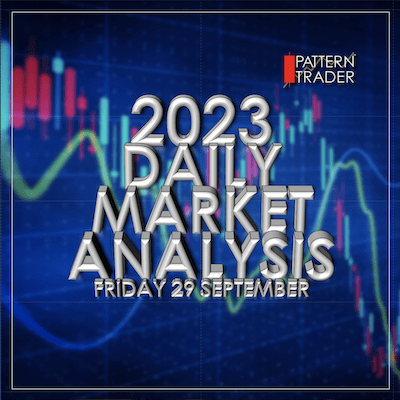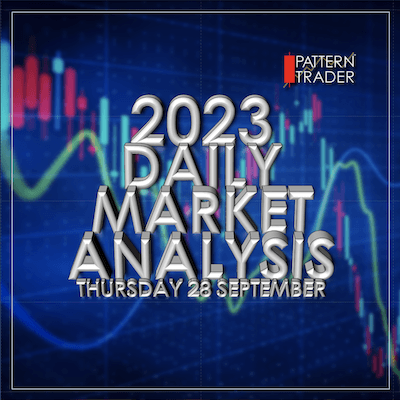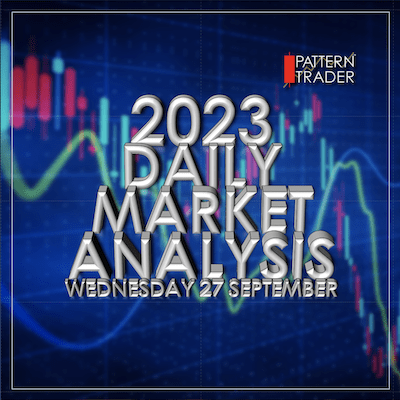
DECEMBER is the third month of Quarter Four and the final month of the trading calendar. It is the second of six months on the DJIA’s and S&P500’s “best six months” of the trading year and NASDAQ’s second of eight best months.
December 2020 has 21 trading sessions, one half day and one public holiday. December tends to start out flat and uncertain in the first week (week 49) then the second week becomes mildly bullish (week 50). The third week (week 51) starts a bit flat, sometimes with a bit of volatility before ending the week very bearishly. The fourth week (week 52) is usually quite bullish. The final week (week 53) starts in very bullish fashion only to end the final two days of the year quite bearishly.
In the last decade, December has been bullish seven years out of the ten (on DJIA) with three years of varied losses in 2014 (-0.02%), 2015 (-1.7%) plus a massive loss in 2018 (-9.5%). Average gains for the seven years are +2.3%. Last year, October 2019 finished with a +1.5% gain.
The last twenty years’ statistics read a little more different with 13 of those 20 years bullish and 7 of them bearish. However, if you consider that 2002’s Dot.com’s crash and the two Sub-prime Decembers of 2007 and 2008 are within those 20 years, December is not all that bearish because all those major market downturns can’t match the -9.5% loss of December 2018, the year of the worst all-asset class losses in history.
December is synonymous with the Santa Claus Rally which is a market anomaly that usually begins about three to five days before Christmas and rallies into the first three days of the new year.
However …
“If Santa Claus should fail to call, the bears may come to Broad and Wall”.
I prefer to say that when we don’t get a Santa Claus Rally, the following year tends to be “troublesome”. This means that the market could get very volatile or extremely flat or a bit of both. Such markets are what I call, “directionless” and make it very troublesome to hold a position.
We didn’t get a Santa Claus rally in 2018 and 2019 went flat between 25 February till 09 October (32 weeks). Most of that year’s gains were made in January, February and quarter four.
For the record, we did get a Santa Claus Rally in 2019.

Since its inception in February 1998, the December returns on the SPDR Dow Jones Industrial Average ETF (DIA) have been 72.73% of the time for an average gain of +2.65% while offering 27.27% for a -3.02% declination.
The SPDR S&P 500 Trust’s (SPY) 27 year record for December is 66.67% for an average gain of +2.10% while offering 33.33% for a -2.74% declination.
The sectors for being bullish in December are:
- Homebuilders (XHB) 71.43% for an average gain of +3.19%, average losses are at 28.57% of the time for a -3.82% declination.
- Healthcare (XLV) 71.43% for an average gain of +3.02%, average losses are at 28.57% of the time for a -3.21% decline.
Next most bullish are;
- Defence & Aerospace (PPA) 66.67% at +2.622%, 33.33% at -4.20% since November 2005
- Cyclicals (XLY) 66.67% at +3.63%, 33.33% at -4.00% since January 1999
- Energy (XLE) 61.9% at +4.42%, 38.1% at -4.95% since January 1999
- Financial (XLF) 61.9% at +3.59%, 38.1% at -4.20% since January 1999
Technology (IYW) is the most bearish sector in December at 45.00%/55.00% (+2.91%/-3.98%). This December, however, we could get an upswing on this ETF given the market’s current appetite for big tech. Furthermore, it will get more affordable;
The iShares Board has approved a 4-for-1 split for IYW for the shareholders of record as of the close of business on December 2, 2020, payable after the close of trading on December 4, 2020. The 4-for-1 split will lower the share price and increase the number of outstanding shares. The total value of shares outstanding is not affected by the split.

For those not in the know, there is a difference between DIA and $DJI, SPY and SPX, QQQ and COMP. There is also a difference between 5, 10 and 15 year averages on the Benchmark ETFs from 21 year averages on the Benchmark Indices.
WEEK 49: 30 NOVEMBER TO 04 DECEMBER 2020
- Last trading day of November has been down on S&P 14 of the last 22
- First trading day of December has been up on NASDAQ 21 out of the last 33 but down 9 of the last 14
- The first week of December tends to be flat, divergent and uneventful.
According to our 5, 10 and 15 year seasonal models for the Benchmark ETFs (DIA, SPY, QQQ):



Benchmarks Indices ($DJIA, $SPX, $COMP) (21 year average) for Week 49:
- $DJIA is normally mildly bullish on Monday, bearish on Tuesday and Wednesday, bullish on Thursday and bearish on Friday.
- $SPX is expected to be bearish from Monday to Wednesday, Bullish on Thursday and bearish again on Friday.
- $COMP is usually bearish on Monday, bullish on Tuesday and Wednesday and more bullish on Thursday and Friday.
• • • • •
WEEK 50: 07 TO 11 DECEMBER 2020
- The second week of December tends to be mildly bullish
According to our 5, 10 and 15 year seasonal models for the Benchmark ETFs (DIA, SPY, QQQ):



Benchmarks Indices ($DJIA, $SPX, $COMP) (21 year average) for Week 50:
- $DJIA is normally mildly bullish all week long.
- $SPX is expected to be bullish from Monday to Thursday and bearish on Friday.
- $COMP is usually bearish on Monday, bullish on Tuesday, extremely bullish on Wednesday and bearish on Thursday and Friday.
• • • • •
WEEK 51: 14 TO 18 DECEMBER 2020
- The Monday before Triple Witching Friday has been up on the S&P 13 of the last 20
- Triple Witching week has been up on the S&P 27 of the last 36
- Wednesday 16 December – FOMC Minutes 14:00 EST
- December Triple Witching Friday has been up on the S&P 26 of the last 38
According to our 5, 10 and 15 year seasonal models for the Benchmark ETFs (DIA, SPY, QQQ):



Benchmarks Indices ($DJIA, $SPX, $COMP) (21 year average) for Week 51:
- $DJIA, $SPX and $COMP is expected to be bearish on Monday, quite bullish on Tuesday, bullish on Wednesday and bearish on Thursday and Friday.
• • • • •
WEEK 52: 21 TO 25 DECEMBER 2020
- The week after December Triple Witching has been up on the DOW 22 of the last 29
- Santa Claus Rally begins this week
- Last trading day before Christmas has been up on the DOW 8 of the last 13 … however …
- The last trading day before Christmas has been down on the DOW 4 of the last 5 in 2015 (-0.23%), 2017 (-0.04%), 2018 (-2.95) and 2019 (-0.2%)
- Thursday December 24 is Christmas Eve – Markets will close at 13:00 EST
- Friday December 25 – Markets closed in observance of Christmas Day
According to our 5, 10 and 15 year seasonal models for the Benchmark ETFs (DIA, SPY, QQQ):



Benchmarks Indices ($DJIA, $SPX, $COMP) (21 year average) for Week 52:
- $DJIA and $SPX is expected to be bullish from Monday to Wednesday and bearish on Thursday.
- $COMP is usually bullish all week.
• • • • •
WEEK 53/01: 28 DECEMBER 2020 TO 01 JANUARY 2021
- The final week of the year has the lowest volumes of the trading year
- The last trading day of the year has been down on the NASDAQ 15 of the last 20 (last year up)
- The first trading day of the year has been up on the NASDAQ 17 of the last 23 (last year up)
According to our 5, 10 and 15 year seasonal models for the Benchmark ETFs (DIA, SPY, QQQ):



Benchmarks Indices ($DJIA, $SPX, $COMP) (21 year average) for Week 53/01:
- $DJIA, $SPX and $COMP is usually extremely bullish on Monday, bullish on Tuesday then bearish on Wednesday and very bearish on Friday.
NOVEMBER 2020 – ELECTION EJECTION
At the end of October …

The market looked to have recovered all its 2020 losses in November with one day remaining as of the close of Friday 27 November ………

Year-to-date (YTD), DJIA, COMP, SPX, DJT, TRAN, RUT and RUI are positive for the year. All the benchmarks closed above their respective 50DSMAs with the VIX and the Dollar doing the opposite. The VIX is still elevated at 20.84 and hasn’t been below 20 points since 21 February.
The dollar is also at its lowest level of the year at 91.78 since 27 April 2018.

As of the close of Friday 27 November, November 2020 has been the second most bullish month on the DJIA in over a decade, gaining 12% in 18.5 days. April has been the most bullish month at +14.7%.
As of the close of Friday 27 November 2020;
- Dow Jones Industrial Average +4.8% YTD
- Nasdaq Composite +36.0% YTD
- S&P 500 +12.6% YTD
- Russell 2000 +11.2% YTD

MACROECONOMIC UPDATE
U.S. HAS A NEW PRESIDENT
The United States voted in their 46th President in a controversial election that incumbent President Trump refused to acknowledge. By Monday 9 November, two days after the official announcement, Trump launched a barrage of lawsuits, many of which were rescinded the following Friday at the same time his lawyers bailed out on him.

Key points from CNBC:
- President Donald Trump’s already long-shot efforts to reverse an apparent win for President-elect Joe Biden by challenging votes in courts suffered three big setbacks in Arizona, Michigan and Pennylvania on Friday.
- In Arizona, Trump’s campaign dropped a legal challenge of a number of ballots in Maricopa County, saying Biden’s overall lead in the state is too big for the disputed ballots to make a difference.
- And in Michigan, a judge declined a request by Trump backers to block the certification of election results in Detroit.
- And in Pennsylvania, Secretary of State Kathy Boockvar said she has determined not to order a recount and a recanvass of the election return in 67 counties. For a recount to be ordered, Trump would have to be losing by less than .5% of the votes cast.
- Trump has refused to concede the race, as his campaign conducts a series of legal challenges in a half-dozen battleground states in an effort to reverse Biden’s lead. The president has falsely claimed that he won the race, even after major media outlets projected a win for Biden.
THE REST OF THE WORLD IS STILL IN RECESSION

While most of the developed economies continue to suffer two quarters of negative year-on-year (YonY) growth, the Eurozone, Germany, France and U.K. joined Singapore and Japan on three quarters of YonY negative growth, along with Hong Kong and Saudi Arabia who have moved into in their fifth quarter of negative YonY growth. Argentina are on four but eight out of its last nine quarters have also been negative. Mexico have gone into six straight negative quarters.
Venezuela has been in negative growth since Q1, 2014 (21 quarters). Their last decline was a -26.8% contraction, the worst in their history.
Last month, I said;
“While the immediate future still looks like a bounce off this October low, the longer term economic health of most of the developed world still looks bleak. The presence of a second coronavirus wave that seems to be steeper and quicker than in February, raises the issue of supply disruptions once again. I don’t think the world can take another round of what happened in Q1 this year … I’m still unconvinced about buying and will remain bearish until something truly positive comes along. I can’t see that happening in November, not after what we’ve seen on 2020, and I won’t be committing too much to the table until I am sure that most of the silly money is gone. The first test is to wait and see how committed they still are if they buy this dip without cause or concern.”

DJIA YTD
Well, I have to admit that I’m impressed with the way the volumes have returned. November saw higher week-on-week volumes at the two main exchanges.
On the NYSE:
- Friday 06 November: NYSE 868 mln avg volume
- Friday 13 November: NYSE 966 mln avg volume
- Friday 20 November: NYSE 997 mln avg volume
- Friday 27 November: NYSE 1,031 mln avg volume
On NASDAQ:
- Friday 06 November: NYSE 3,439 mln avg volume
- Friday 13 November: NYSE 3,676 mln avg volume
- Friday 20 November: NYSE 3,926 mln avg volume
- Friday 27 November: NYSE 4,332 mln avg volume
Having said that however, volumes on the benchmark ETFs don’t tell the same story as volumes in November were poorer than the previous two months and faded more as we went deeper into the month.

This begs the question as to where the volumes were actually going within the two exchanges (NYSE and NASDAQ) if volumes on the ETFs didn’t increase with the same magnitude as the exchanges.
So will volumes improve after Black Friday or will it be 2020 as usual?
SUMMARY
It’s like 2020 wasn’t bad enough, it had to have a 53rd week with four tradings sessions to extend our misery.
To be honest, I am really not concerned about where December goes because I’ve stopped trading for the year. I am taking December off so it doesn’t matter to me where we go from here till the end of the year.
But if you’re going to continue trading till the end of the year, the stats are in favour of the bulls even if the economic circumstances aren’t. So stay long, keep your risk low and keep watching highs for divergence. And don’t do anything stupid to ruin your Christmas.
HAPPY HUNTING!
Copyright© 2020 FinancialScents Pte Ltd
~~~~~~~~~~~~~~~~~~~~~~~~~~~~~~~~~~~~
• • • • •
Write to conrad@finscents.com for queries and further information












